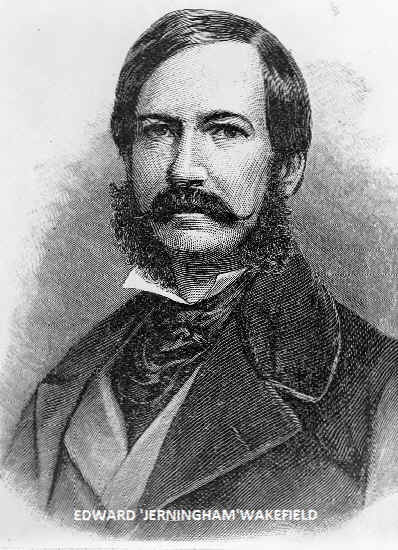|
PRISCILLA WAKEFIELD AUTHOR AND PHILANTHROPIST ( 1751 - 1832) |
|
PRISCILLA WAKEFIELD AUTHOR AND PHILANTHROPIST ( 1751 - 1832) |
| Priscilla Wakefield
(nee Bell) was born in Tottenham on the 31st January 1751 and was the eldest daughter of
Daniel and Catherine Bell of Stamford Hill. Catherine Bell was the daughter of David
Barclay of London who was a prominent member of the Quaker movement and one of the
founders of Barclays bank. They had 10 children in all, eight daughters and two sons
although one or two of the children had died in their infancy. Priscilla was married in January 1771 to Edward Wakefield (1750-1826) who was a prominent London merchant. They were to have two sons Edward and Daniel and a daughter Isabella. |
|
| Priscilla Wakefield
was a very successful business woman who also became prominent for her philanthropic
undertakings. She was one of the earliest promotors of savings banks which she referred to
as ‘Frugality Banks’ and almost the first savings bank in
existence was opened by her in what was then Ship Inn yard in Tottenham. It had commenced
operations under the auspices of a friendly society established by her in Tottenham in Oct
1798. Another of her undertakings was to form a charity for lying-in woman which was
established in 1791. It was however as writer of children’s books that she became most widely known. Her first publication was entitled ‘Juvenile Anecdotes, Founded on Facts’ which appeared in two volumes between 1795 and 1798. Encouraged by her success she produced many other books of the same nature and some more advanced dealing with science and travel. The best known of her works is ‘The Juvenile Travellers’ that was first published in 1801 of which there were to be a further eighteen editions published until 1850, Priscilla Wakefield also had a considerable knowledge of botany and natural history and published many books between 1796 until her death in 1832. One of her more famous books was ‘An Introduction to the Natural History and Classifications of Insects’ which was published in 1816. She was also a devout Quaker but, although she was a member of the Society of Friends and conformed to their religious practice, she did not observe their restrictions regarding dress and abstinence from amusements |
PORTRAIT OF PRISCILLA WAKEFIELD |
It would appear that the topics of her many publications had few bounds and she wrote about many subjects other than children’s books and nature for which she was most noted. Here are just a few surprising titles from her other works:
|
PICTURED BELOW ARE ILLUSTRATIONS OF A FEW OF PRISCILLA'S WORKS |
|
|
|
 |
|
|
|
WAKEFIELD FAMILY CONNECTIONS |
|
|
Oil
Painting by Wheatley, Francis (1747-1801) Edward and Priscilla Wakefield and Mrs Wakefield’s sister Katherine Bell (later Gurney) c1774
Castle Museum, Norwich |
| The above illustration shows Priscilla Wakefield along with her husband
Edward and Priscilla’s younger sister Catherine. Catherine Bell was later to marry
John Gurney whose family owned ‘Gurneys Bank’ in Norwich, Norfolk. They were to
have six children but their daughter Elizabeth Gurney (Born Norwich 1780) later married
Joseph Fry in Norwich on the 19th August 1800. Joseph Fry was also from a banking
background and following their marriage they first moved to the City of London and later
to East Ham. They had eleven children, five sons and six daughters.
|
|
ELIZABETH FRY (nee GURNEY) 1780-1845 |
In
1840 Elizabeth Fry opened a training school for nurses. Her programme inspired Florence
Nightingale who took a team of Fry's nurses to assist wounded soldiers in the Crimean war.
|
WAKEFIELD FAMILY - NEW ZEALAND CONNECTIONS |
| One
of Priscilla’s sons, Edward Wakefield (1774-1854) married Susanna Crash on the 3rd
Oct 1791 in Felstead Essex. They had ten children in total but five of their sons were
later to become prominent in the colonisation of Australia and New Zealand. Edward Gibbon Wakefield - Daniel Bell Wakefield – William Hayward Wakefield –Arthur Wakefield - Felix Wakefield
|
|
|
 |
 |
| The 1st New Zealand Parliament – Wakefield Family Members Listed: | |||
| MEMBER | ELECTORATE | PROVINCE | ELECTION DATE |
| Edward Gibbon Wakefield | Hutt | Wellington | 18th August |
| Jerningham Wakefield | Christchurch County | Canterbury | 27th August |
| Dillon Bell | Short Term Member - Could he be related to Wakefield family? | ||
DEATH OF PRISCILLA WAKEFIELD 1832 |
|
|
|
Mrs. Priscilla Wakefield died at the house of her daughter, Isabella Head,
(nee Wakefield) on Albion Hill, Ipswich, on 12 September 1832, and was buried on 20
December in the Friends' burial-ground at the New Meeting House, Ipswich. There is a plaque dedicated to the life and works of Priscilla Wakefield that is located at High Cross Tottenham close to the place where she was born. |
| FOOTNOTE: The Missionary John Williams was also born in Tottenham in 1796 and his family would have been neighbours of the Wakefield family on Tottenham Green. He was of an identical age to Edward Gibbon Wakefield and it is interesting to speculate whether these childhood friends may have been known to each other during their time in the south seas. John Williams was killed by cannibals on the island of Erromanga in the South West Pacific in1839. His story is also featured on this website. |
|
|
PRISCILLA WAKEFIELD NURSING HOME
|
Article prepared by Alan Swain – December 2015
Background Image- Fly Sheet - An intoduction to Botamy by Priscilla Wakefield